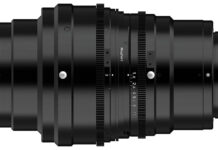Meet the Medal-Winners in South Australia’s Wildlife Olympics
In a delightful twist on the traditional Olympics, South Australia has brought together an extraordinary celebration of its most agile, powerful, and fascinating animal athletes. The Wildlife Olympics, an event gaining substantial attention and trending on Google searches today, showcases the remarkable abilities of the region’s diverse wildlife. This innovative event not only highlights the natural talents of these creatures but also promotes awareness and appreciation for South Australia’s rich biodiversity.
For more details on this unique event, visit the official post here.
A Celebration of Natural Athletes
The concept of the Wildlife Olympics stems from the idea of recognizing the natural prowess of animals in their habitats. Unlike the human-centric Olympics, this event does not involve any form of competition or training. Instead, it acknowledges the innate abilities of animals in various categories such as speed, strength, agility, and endurance.
South Australia’s Wildlife Champions
- The Speedster: The Peregrine Falcon
The Peregrine Falcon, known for its incredible diving speed, takes the gold in the speed category. This bird of prey can reach speeds of up to 320 km/h (200 mph) during its hunting stoop (high-speed dive), making it the fastest animal on the planet. The falcon’s streamlined body and powerful muscles enable it to swoop down on its prey with unmatched velocity. - The Strongman: The Red Kangaroo
In the strength category, the Red Kangaroo stands tall. These marsupials are known for their powerful hind legs, which can deliver kicks with a force of up to 850 pounds per square inch. The kangaroo’s muscular build and remarkable jumping ability—covering distances up to 9 meters (30 feet) in a single bound—highlight its dominance in this category. - The Endurance Master: The Wedge-Tailed Eagle
The Wedge-Tailed Eagle earns its medal in endurance. This majestic bird, one of the largest eagles in the world, can soar for hours on thermal currents without flapping its wings. It is known to travel vast distances across the Australian outback, showcasing its incredible stamina and adaptability. - The Agility Expert: The Numbat
The Numbat, a small marsupial, dazzles in the agility category. With its keen sense of smell and sharp claws, the Numbat can quickly navigate through dense underbrush and climb trees in search of termites, its primary food source. This agility is crucial for its survival, allowing it to evade predators and find nourishment efficiently.Purpose and Impact of the Wildlife Olympics
The Wildlife Olympics aims to foster a deeper connection between people and nature. By showcasing the extraordinary abilities of animals, the event encourages the public to appreciate and protect wildlife and their habitats. It serves as a reminder of the incredible biodiversity that exists in South Australia and the importance of conservation efforts.
Educational Outreach and Community Engagement
The event has also sparked educational initiatives, with schools incorporating the Wildlife Olympics into their curriculums. Students learn about the unique traits and habits of local wildlife, fostering a sense of responsibility towards environmental stewardship. Community events, such as guided nature walks and wildlife talks, have been organized to engage the public and spread awareness about the importance of preserving natural habitats.
Reactions and Reviews
The Wildlife Olympics has garnered positive reactions from both the local community and international audiences. Conservationists and wildlife enthusiasts have praised the event for its innovative approach to wildlife education and conservation. Social media platforms are abuzz with discussions and shares, further amplifying the event’s reach and impact.
Expert Opinions
Dr. Jane Goodall, renowned primatologist and conservationist, expressed her admiration for the Wildlife Olympics. "This event is a wonderful way to celebrate the incredible abilities of animals and raise awareness about the need to protect their habitats. It’s an inspiring initiative that brings people closer to nature," she said.
Good to Know: Fun Facts About South Australia’s Wildlife
- Peregrine Falcon: The Peregrine Falcon’s incredible speed is due to its specialized anatomy, including strong flight muscles, long wings, and a unique respiratory system that allows it to breathe efficiently at high speeds.
- Red Kangaroo: The Red Kangaroo’s powerful legs are not just for jumping; they also use them for self-defense. A well-aimed kick from a kangaroo can deter predators and rivals.
- Wedge-Tailed Eagle: The Wedge-Tailed Eagle’s keen eyesight allows it to spot prey from great heights. Its eyes are equipped with a high number of sensory cells, providing it with exceptional vision.
- Numbat: Numbats have a highly specialized diet, feeding exclusively on termites. They can consume up to 20,000 termites in a single day, thanks to their long, sticky tongues.
Conclusion
The Wildlife Olympics is more than just an event; it’s a celebration of the natural world and a call to action for conservation. By highlighting the remarkable abilities of South Australia’s wildlife, the event fosters a greater appreciation for these creatures and the ecosystems they inhabit. As it continues to trend on Google, the Wildlife Olympics serves as a powerful reminder of the beauty and importance of preserving our natural heritage.
For more information, you can refer to the dedicated post here.
































